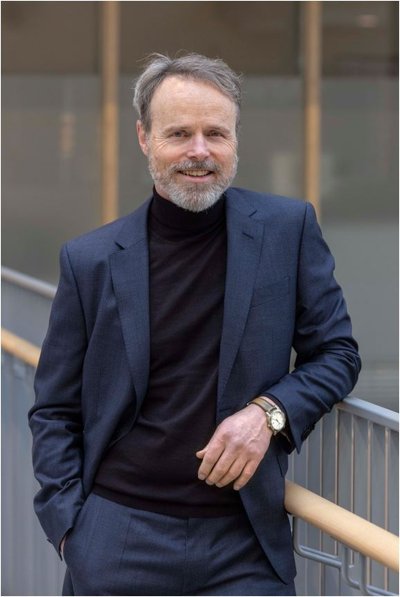Crafting Intrapreneurial Stewardship - An institutional perspective on client-led innovation in smart building maintenance
Koos Johannes is a PhD student in the department of Construction Management. (Co-)supervisors are dr. J.T. Voordijk from the faculty of Engineering Technology, dr. I.A.M. Wakkee from Amsterdam University of Applied Sciences (Professor of Entrepreneurship) and dr. G. Aranda-Mena from RMIT University (School of Property Construction and Project Management).
 Available research suggests that construction clients, as building owner-occupier, are struggling to implement smart maintenance. This thesis assumes that these reported problems are due to a failure to fully understand the institutional complexities of smart maintenance commissioning in organizational networks. Hence, the aim of this thesis was to improve our understanding of these complexities and to develop theoretical and practical knowledge on the professionalization of construction clients in commissioning smart maintenance through stewardship. Stewardship theory portrays managers and employees as collectivists, pro-organizational and trustworthy, and can be used for designing collaborations based on intrinsic motivation and trust.
Available research suggests that construction clients, as building owner-occupier, are struggling to implement smart maintenance. This thesis assumes that these reported problems are due to a failure to fully understand the institutional complexities of smart maintenance commissioning in organizational networks. Hence, the aim of this thesis was to improve our understanding of these complexities and to develop theoretical and practical knowledge on the professionalization of construction clients in commissioning smart maintenance through stewardship. Stewardship theory portrays managers and employees as collectivists, pro-organizational and trustworthy, and can be used for designing collaborations based on intrinsic motivation and trust.
A first insight from this thesis relates to how institutional complexity can be understood (study 1). In a case study fifteen tensions were identified from which two types of tensions could be distinguished. Interorganizational tensions find their origins in the institutional fields of suppliers and subcontractors from where maintenance services are purchased. The associated coping strategy for these tensions is to develop capabilities for connecting institutional fields. Intra-organizational tensions on the other hand are internal tensions between two dominant professional groups within the construction client organization: project managers and maintenance managers. To deal with these intra-organizational tensions, construction clients need to develop new logics and practices that incorporate and substitute for the existing dominant institutional logics of ‘Projects’ and ‘Maintenance’. A third coping strategy is identified that may be combined with both the other coping strategies: change leadership.
A second insight from this thesis relates to the capabilities that construction clients need to address the institutional complexities of smart maintenance management (SMM) and connect various institutional fields (study 2). Using data collected from four cases involving two construction clients, a framework with eight maturity dimensions, involving 23 sub-dimensions, has been developed and validated. The maturity model can be used in audits and self-assessments by interviewing representatives of organizations involved in maintenance.
The third insight from this thesis relates to the role of the purchasing function in commissioning smart maintenance and emerged from considering the service triad concept (study 3). Using the maturity framework of study 2, the SMM maturity of four construction clients was measured. The findings indicate that the service triad concept fails to provide sufficient detail to adequately describe the construction client’s role in smart maintenance management. A configuration based on six, rather than three, roles more realistically describes collaboration in smart maintenance management. Hence, the service triad concept is extended to a service hexad.
Our fourth insight relates to intrapreneurial stewardship (study 4). A process model for change implementation through stewardship interventions has been developed and then evaluated in a case study. The process model combines constructs from stewardship theory with intrapreneurship concepts and describes how employees can be coached by leaders during periods of organizational change. A first way for leaders to coach their followers is by providing cognitive frames that enable followers to perceive a problem from a fresh angle, thereby transforming a problem into a change opportunity. A second coaching strategy for leaders relates to relational and motivational support. By providing relational and motivational support, leaders can positively boost their follower’s level of intrapreneurial self-efficacy as well as their psychological ownership of change opportunities. This makes it more likely that they will take on challenging tasks and make stewardship interventions in the long-term interest of the construction client and its stakeholders.
Together, the insights from the four studies are synthesized in a framework for client-led innovation in SMM and describe how construction clients can increase SMM maturity in institutionally complex environments through stewardship.





